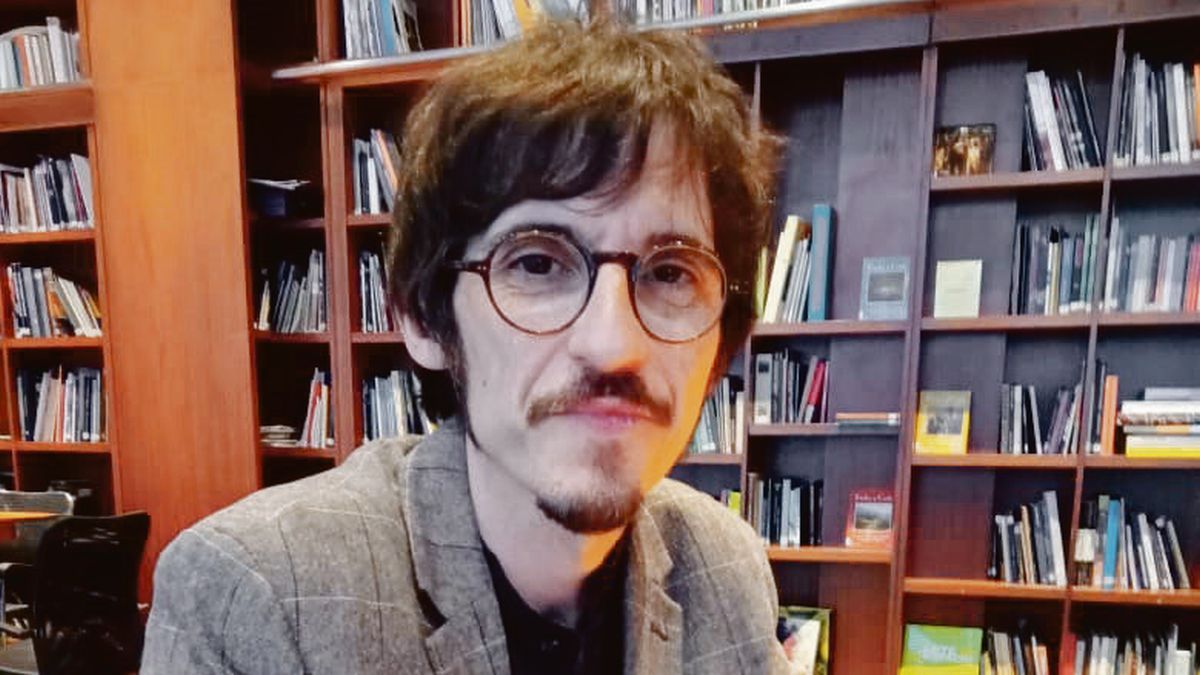John Vic: Because they are frustrated people, and they have no reason to be with the comfortable life they lead. They live in a difficult situation to define that makes them take refuge in art, something they have been doing since they were young and that serves them less and less to justify their lives. And sex is an inertia to which they lend themselves, a way of moving forward. They are people who are always comparing themselves to when they were young and had a certain vital ideal. They feel like a “betrayal” to move away from that ideal that they thought was going to be their life.
P.: They are where they wanted to be, but not in the dream position.
JV: They dedicate themselves to things that interest them, but always from a secondary side. Instead of being a film director, the protagonist is a film critic, and he does it very well. They see themselves as “we are one step away” from the goal. That’s why they care about a friend who died when he was young, that he was like the most talented, and what if he had survived: he would have arrived. Fantasy that is fidelity to the youthful model.
Q.: Your novel is crossed by the world of cinema
JV: My books are crossed by other disciplines. I seek, through literature, other ways of representing reality. In this appears the cinema, photography. My first novel was about music. I have a book of stories about art. I use that, among other things, to talk about the mechanisms of fiction. The artifice makes, at some point, reflections on the narration itself.
Q.: Is deception what links the cultural and sexual activities of your characters?
JV: They lie to each other, but also to themselves. And then there is the lie as the foundation of fiction. Who opens a book, watches a movie, wants to be lied to to be part of that alternative reality that is a narrative. In the center of “The saddest animal” there is a story written by one of the characters, the youngest, the one from another generation. It is a fiction within fiction. Then the others, who have read it, have a bad opinion of that story. It is a game of mirrors between what is reality and what is not reality. And if reality is what is outside of a book and fiction what is inside, everything is much more permeable, more ambiguous. The lie in fiction and in the daily life of the characters breaks the fictional pact, the typical parameters of what is a fiction and what is not.
Q.: Your novel has three chapters that are like three nouvelles.
JV: I am interested in novels that play with the conventional limits of what a narrative is, for example, inserting different narrative capsules. The first part of the novel is narrated in the first person by who seems to be the narrator, then there is the story of one of the characters, and then the rest alternate as narrators, but the plot, what happens, happens between one chapter and another. We don’t see what happens except as a consequence. In each ending we know what has happened from the previous narrator to the present, who finds a witness to what happened in those months. He wanted to narrate in the ellipses within an expanded realism that goes beyond the merely enunciative.
Q.: What prompted you to tell this story?
JV: I wanted to work on a cinephile, someone obsessed with cinema, whose life had the automatism of comparing reality with specific movie scenes. That was the germ, then came the rest. It all begins when a friend sends Jonas, the film critic, a film from when they were young, where he, in a blurry way, appears in the foreground. That ghost from the past is the spark that makes things happen that force the characters to confront their fears and frustrations.
Q.: What are your other novels about?
JV: “Hobo” is about a blues musician from Mississippi, in the 20’s, I play with the myth of those characters. I put together a Frankenstein with anecdotes from various musicians, who don’t know if they are real or not. In “The theater of light” I approached the world of cinema in Barcelona from the 10s to 20s, when it was about to become an industrial center of cinema due to the war, but the businessmen did not dare to invest and the opportunity passed . “The Red Cloister” is about real painters from the most diverse places and times, there are fictions based on real and absolute fictions. And “The magnetized forests” is a mystery novel that plays with the conventions of the 19th century police, narrated ironically by a journalist who seeks to be right everywhere and has to face a guru of the time.
Q.: What made you say that “omne animal post coitum triste est”?
JV: That Latin sentence Freud recovered it to talk about that after the vital maximum of the orgasm comes the decay. In the novel, after those moments of full intensity, which there are so few in life, disappointment arrives by contrast, due to lack of intensity, which is what invades the lives of the people who live in “The Saddest Animal.”
Q.: What are you writing now?
JV: “The saddest animal” talks about love in the recent past, now I write about love today, in a transformation drastically greater than that of the 60s.
Source: Ambito
David William is a talented author who has made a name for himself in the world of writing. He is a professional author who writes on a wide range of topics, from general interest to opinion news. David is currently working as a writer at 24 hours worlds where he brings his unique perspective and in-depth research to his articles, making them both informative and engaging.




